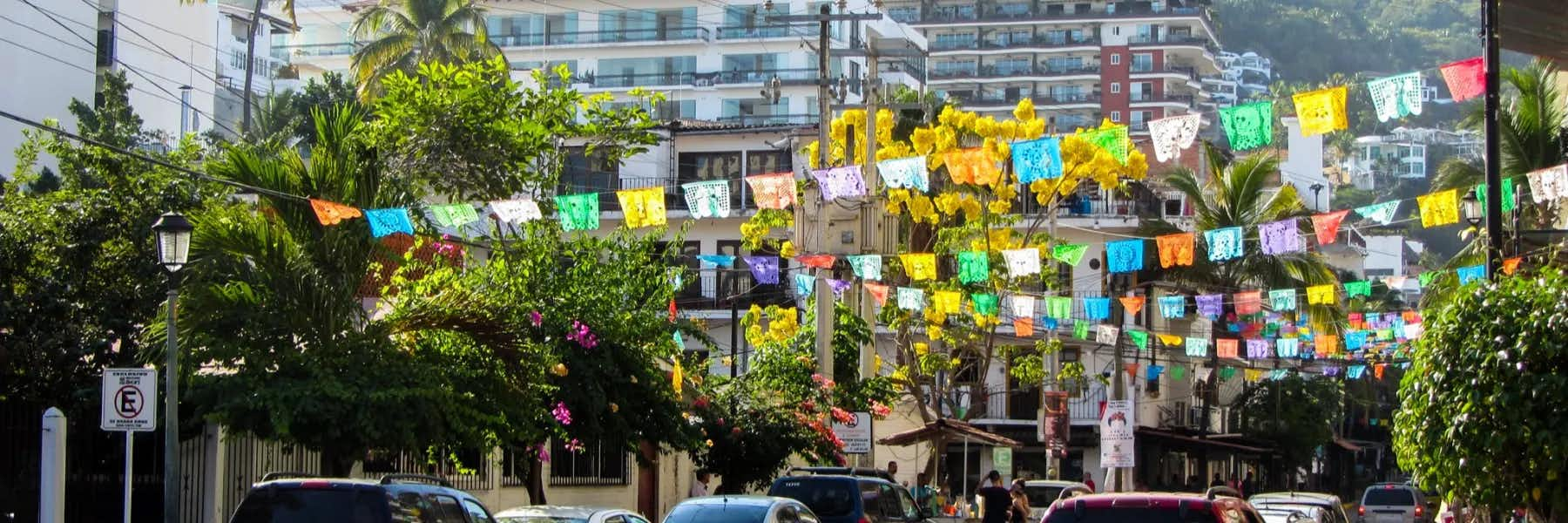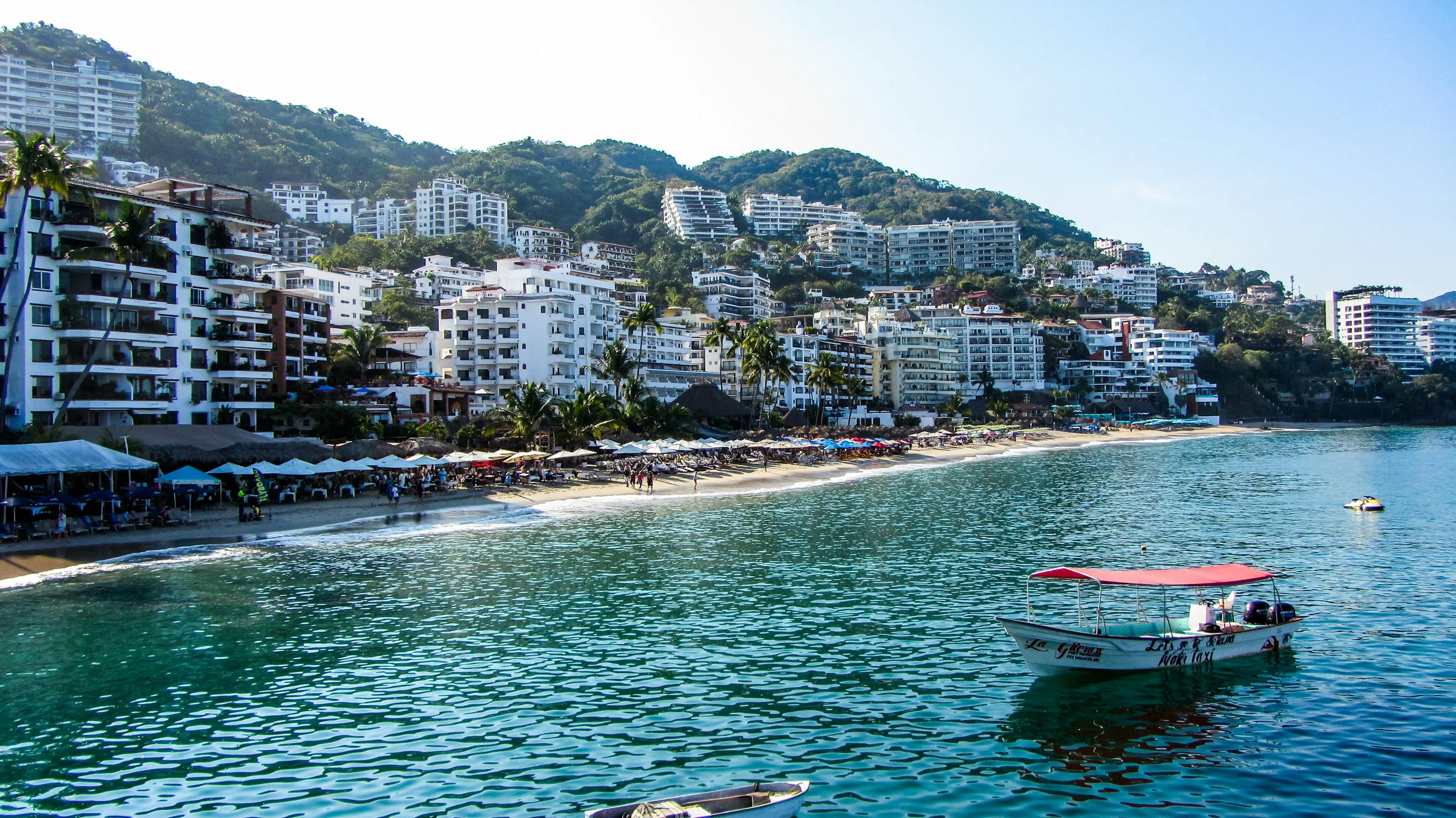Mexico has a lot to offer in terms of great weather, beautiful scenery, and authentic Latin American culture; plus, you will find lots of affordable real estate in Mexico.
Best of all, it’s perfectly legal for foreigners to own Mexican real estate.
The time is right for Mexico….
Get Your Free Mexico Report Today!
Get Your Free Mexico Report Today!
Explore real estate opportunities in Mexico and other countries with our daily postcard e-letter.
Simply enter your email address below and we’ll send you a free special report – Mexico: The Perfect Close-to-Home Retirement Haven.

By submitting your email address, you will receive a free subscription to IL Postcards, Overseas Dream Home, The Untourist Daily and special offers from International Living and our affiliates. You can unsubscribe at any time, and we encourage you to read more about our Privacy Policy.
It is the United States’ closest neighbor to the south, and at no other time in the long history of that relationship have the benefits of living and investing in Mexico been more apparent…and easier to take advantage of. Not just for U.S. citizens, but for Canadians, Europeans, South Americans…anyone looking for great weather, low prices, rich culture, and potential profits.
Mexico is also one of International Living’s top retirement destinations. The Annual Global Retirement Index looks at the best opportunities worldwide for retirement living, and Mexico regularly ranks in the top 10.
Mexico has it all…rich culture, perfect climate…affordable living…not to mention mountains, beaches, deserts, and just about everything in between.
Whether you dream of a colonial home with graceful arches, thick walls, and a garden overflowing with pink bougainvillea; a lazy beachfront retreat where you can sit on your front porch with your feet propped up and watch the Caribbean roll up on the sand; or a dramatic Pacific coast lookout where the waters crash against the cliffs below and you can watch the sun set behind a watery horizon—you can find your dream home in Mexico.
Guide to Buying Real Estate in Mexico
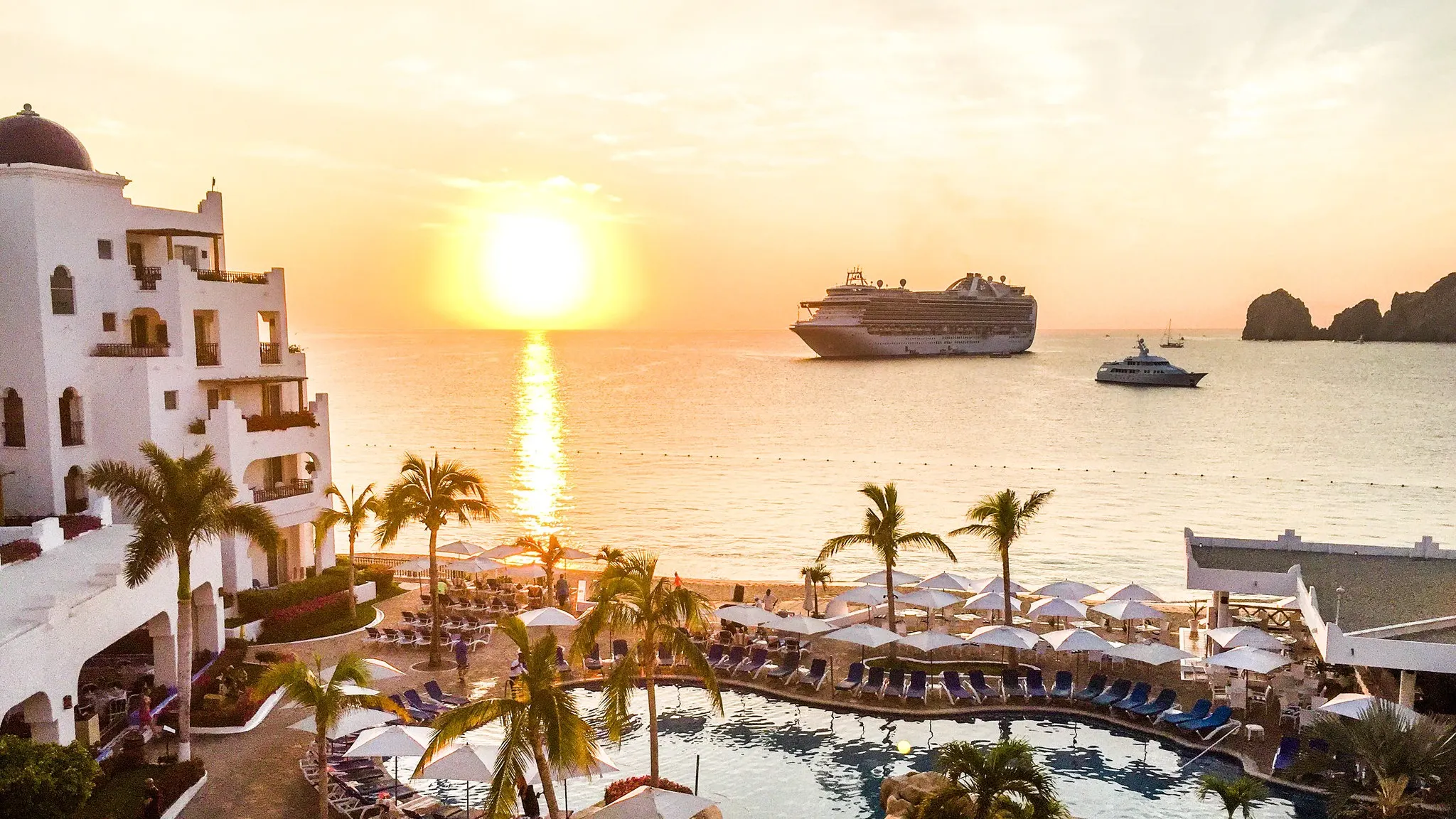
A Step-by-Step Guide to Buying Property in Mexico
Step 1: Make an Offer
This is usually done in the form of a “promissory agreement” (contrato de promesa), which your attorney will draw up.
Step 2: Set Aside 10% as Earnest Money in Escrow
Once your offer is accepted in writing, you’ll need to put a certain amount (usually 10% to 20%) of the purchase price aside as earnest money. This should be held in escrow with a third party. Whatever you do, don’t give this money to the seller.
Notarios—while they might be the logical, neutral third party to hold this money—won’t hold deposits in their bank accounts, as they don’t want the tax liability on the funds. If you’re working with an attorney or real estate agent, they will likely have a system in place they can recommend.
One arrangement is for the deposit to be held in escrow in dollars in the United States. When the deal nears closing, the deposit is transferred at the current rate of exchange. This avoids the exchange rate problem—if the earnest money is transferred immediately into pesos and sits around several months, and then the deal falls apart, someone will have to eat the currency fluctuations and the cost of the exchange…twice. And it will probably be you, the buyer. Another option is for you to have a cashier’s check drawn up in the seller’s name and have your notario attorney or a trusted third party keep it. If you are working with a title insurance company, they will usually provide escrow services.
IL tip: Buyer beware. In the U.S., escrow agents are licensed and legally responsible for seeing that the conditions of a contract are met before money is released. That is not the case in Mexico. If the real estate agent you’re working with is acting as an escrow agent and he’s honest, there probably won’t be any trouble. But if he runs off with your funds, there won’t be much you can do about it.
Step 3: Inquire About Title Insurance
We suggest you get title insurance for your property if you can, but unfortunately, it’s no longer widely available in Mexico.
If you are able to obtain title insurance, then a notary will investigate a property’s title to be sure it is free from immediate encumbrances and that the taxes are paid; that research may not extend back through the entire chain of ownership. A title insurance company, however, will dig to be sure that there are no surprises lurking. If the title search tells you that the title is not clear, don’t buy the property.
Step 4: Wait While the Notary Investigates the Title, Gets an Appraisal, and Puts the Closing Papers in Order
You need to have a purchase sales agreement (contrato de compraventa) drawn up at this point. Normally, you’d have your attorney do this. The legally binding version of the contract is Spanish. Even if you have a side-by-side translation to English, it may not be accurate. So, have your attorney check the Spanish version and explain it to you. Depending on the way that you’re purchasing the property, your attorney can draw up the papers for a direct deed or help you form a Mexican corporation, or create a bank trust, and he’ll get the papers in order to register your purchase with the Ministry of Foreign Affairs.
In the meantime, the notary will verify the property’s title. In doing so, they will request a copy of the title deed and also documents such as the lien certificate (certificado de libertad de gravamenes), which will show the name of the owner of record as well as the details of the property, including the lay of the land (its size) and its status (commercial or residential, for example). They will also request from the local tax authority a non-lien certificate (certificado de no adeudo), which, if issued, will show that either no taxes are due or will reveal unpaid back taxes. In addition, they will make sure that no other property-related bills, such as water or electricity, are outstanding. You can also have the property appraised at this stage to establish its assessed value.
Other Papers You Should Have in Hand
If you are purchasing a home, make sure you have copies of the paid water, electricity, telephone, homeowner’s association, cable, and other utility bills from the seller. Unpaid bills remain attached to an address. They will be your responsibility—not that of the prior owner. This applies to unpaid mortgages, too, so make sure that any mortgage debt is paid off by the seller before the property title transfers to you. If the seller had household help—a maid or gardener, any others—then you should have from each a signed letter stating that they have received their severance pay and that their rights have been satisfied. If you want to keep them on, start afresh with a new employment contract drawn up by your attorney.
Get Your Free Mexico Report Today!
Get Your Free Mexico Report Today!
Explore real estate opportunities in Mexico and other countries with our daily postcard e-letter.
Simply enter your email address below and we’ll send you a free special report – Mexico: The Perfect Close-to-Home Retirement Haven.

By submitting your email address, you will receive a free subscription to IL Postcards, Overseas Dream Home, The Untourist Daily and special offers from International Living and our affiliates. You can unsubscribe at any time, and we encourage you to read more about our Privacy Policy.
Step 5: Close on the Property
Once you have assurances from your attorney and notary that the property’s title is good and the purchase of sales agreement is ready for you to sign, you’ll meet with the notary, the seller, and your attorney or broker for the closing. You get the deed (escritura), and you either bring a check for the remainder of the payment or have the funds transferred into the escrow account and have whoever is acting as escrow agent release them once you have the deed in hand.
Step 6: The Notario Registers Your Ownership
Though you’ll have a copy of all the paperwork associated with the property, the transaction isn’t really complete until the notary registers your deed with the land registry office. We’ve heard all sorts of horror stories over the years (from all over the world) about notarios not completing this last step properly. So, you must follow up with the notario to ensure this has been done.
When you have your (presumably registered) deed in hand, look for a seal on each page and for a certificate of registration, which should be included with the documents. With these papers in hand, you can go to the land registry office, where they will look at the registration number on the certificate and show you how the transaction has been listed in their books.
Step 7: Have Your Attorney Draw up a Mexican Will for You
IL tip: While your Mexican property can be transferred to your heirs as requested in your U.S. or Canadian will, it is by far the least desirable way to ensure they’ll get it. Guaranteed, if other arrangements have not been made, your heirs will spend months, if not years, wrangling with Mexico’s bureaucracy over your estate. You can save them the torment, time, and expense by having your attorney draw up a Mexican will in Spanish that disposes of your Mexican possessions and property. If you’re buying in a bank trust, you can name beneficiaries and heirs in the trust, which removes the need for probate.
Step 8: Don’t Forget the Ministry of Foreign Affairs
No matter how you plan to hold your property in Mexico, you’ll need to alert the Ministry of Foreign Affairs that you intend to make a purchase. As we mentioned before, it is usually your attorney or the notary who applies for the permit on your behalf before the closing. It’s standard practice to issue these permits, so you needn’t worry that you’ll be waiting months for the paperwork to go through. In fact, the government pledges to have them issued within a few days.
If you’re buying through a trust and you apply for your permit through the ministry’s central office in Mexico City, you’ll have it within five working days. If you apply at one of the state offices, the permit must be granted within 30 days. If you’re forming a Mexican corporation that will hold title to the property, you need to register that company with the Ministry of Foreign Affairs. The Ministry has 15 days to complete the registration. In any of those cases, if the ministry’s deadline passes and you still have heard nothing, then the trust permit or the registration are automatically considered authorized.
Real Estate Taxes in Mexico

Transfer Tax
An acquisition tax is payable by the buyer when property changes hands. The cost varies by location. This is typically 3% to 3.3% in the Riviera Maya.
Inheritance/Gift Tax
Although Mexico does not impose an estate or inheritance tax, there is a tax on certain gifts involving real estate (payable by the recipient). Gifts between spouses and direct family members are not taxable.
Property Tax
The property tax on Mexican real estate is called predial. Compared with property taxes in the U.S., the cost of the predial is quite reasonable. It is a local tax and in most areas is payable quarterly. The average is approximately 0.1% of the assessed value of the property at time of sale.
It is very common in many communities in Mexico to use the “assessed” value of the property as the basis for these taxes, and the official assessment can be considerably lower than the market value of the home—often only 30% or 40% of the actual sale price. You should know, though, that under Mexican law, using an assessed value less than the actual commercial value for tax purposes is illegal. And, it means you’ll likely pay more capital gains tax when you sell.
Rental Income Tax
If you do not reside in Mexico but rent out your Mexican property, your rental income is subject to tax at a rate of 25%. For residents, rental income is taxable at the regular income tax rates.
Capital Gains Tax
If you sell the property, you’ll owe capital gains tax. This can be up to 35% of the profit, but can be lowered based on how long you have held the property, authorized deductions, etc.
To ensure that capital improvements you make to a property can be deducted, make sure you get the correct receipts. In Mexico, you can only claim deductions for services and materials that are recorded on official receipts and invoices called facturas. Facturas must be printed on a government-authorized press and have the tax ID number (RFC number) of the company or individual issuing the receipt. No factura, no tax deduction.
The closing costs in Mexico are usually paid by the buyer. Fees for closing, in a regular transaction, usually come to between 5% and 9% of the cost of the property. The fees will cover an acquisition tax, property-registration fee, a fee for the tax certificate, the title-search fee, the property-appraisal fee, the notary’s fee, and any miscellaneous clerical fees, as well as a value-added tax on anyone whose services were engaged in facilitating the transaction (the appraiser, the notary, etc.). You can get an estimate of these fees from your notary and/or real estate agent when you make your offer.
The seller pays the real estate agent’s fee—usually somewhere between 6% and 10% of the sale price.
Get Your Free Mexico Report Today!
Get Your Free Mexico Report Today!
Explore real estate opportunities in Mexico and other countries with our daily postcard e-letter.
Simply enter your email address below and we’ll send you a free special report – Mexico: The Perfect Close-to-Home Retirement Haven.

By submitting your email address, you will receive a free subscription to IL Postcards, Overseas Dream Home, The Untourist Daily and special offers from International Living and our affiliates. You can unsubscribe at any time, and we encourage you to read more about our Privacy Policy.
Best Places to Buy Real Estate in Mexico
Riviera Maya
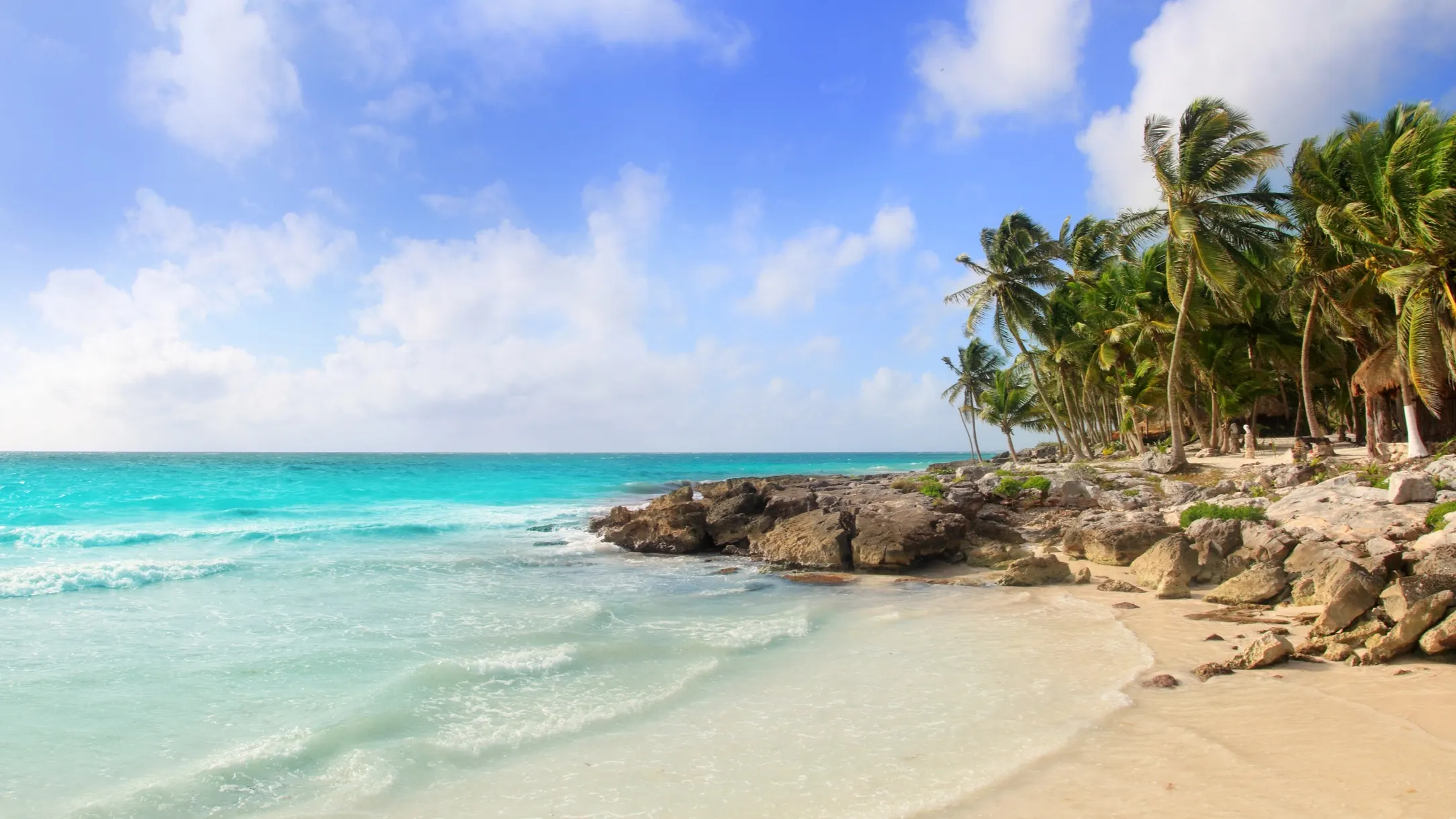
On Mexico’s stunning Caribbean coast, the Riviera Maya is an 80-mile stretch of coast running south of Cancun to the little town of Tulum.
Picture swaying palm trees, cool powder-sand beaches rimming bright turquoise sea, and that’s the Riviera Maya—a postcard-perfect destination.
In the late 1960s, this part of Mexico was undeveloped, home to coconut plantations and rustic fishing villages. But the Mexican government wanted to take advantage of the advent of affordable jet travel, rightly figuring that tourist numbers were set to explode. They built an international airport, one of the busiest in the region, put in roads and utilities, and embarked on a campaign to woo tourists. It paid off. In 2018, Cancun International Airport saw more than 25 million passengers.
Today, you can party and shop in the chic city of Playa del Carmen…swim with sea turtles in the tranquil beach town of Akumal…dine on gourmet food in the hipster haven that is Tulum. Each of these three locales has its own unique vibe, but they all have beautiful Caribbean beaches in common. Back from the coast, you’ll find Mayan ruins, water parks, jungle, and wildlife.
Tourists come here from across the world. Europeans visit in summer, North Americans in winter, wealthy Mexicans at Easter…along with visitors from South America, Australia, and even Russia.
Own a modern, comfortable two-bed condo in the right location in Playa, Akumal, and Tulum, and you can generate attractive rental income by renting your place to these tourists when you’re not staying there yourself.
Real Estate Trend Alert (RETA) Expert Ronan McMahon on Real Estate in the Riviera Maya
For the two decades I’ve been scouting the Rivera Maya, and for another four decades before that, it’s been undergoing a mammoth transformation, the likes of which I’ve only seen surpassed by Asian mega-cities and oil-rich Middle Eastern metropolises.
It’s a boom built on one of the biggest tourism industries in the world, with millions of people coming each year—2023 alone saw a record-shattering 32.75 million people pass through Cancun airport.
And it’s a transformation that we at RETA have well and truly sunk our teeth into…not just for a handful of one-off deals, but for years of opportunities in best-in-class communities, delivered by best-in-class developers, in ideal locations…
Specifically, Playa del Carmen and Tulum are the two destinations I believe offer the best investment potential.
In Playa del Carmen, for example, in 2021, RETA members had the chance to buy one-bedroom condos in the Singular Dream community. Our price was from just $174,600. I saw a one-bed condo in Singular Dream listed for $397,362 in March 2024. That’s a remarkable uplift of $222,762.
RETA has seen similar success in Tulum as well…
I’ve been scouting Tulum since 2004. Back then, there was only one ATM and a few rustic restaurants. Over the years, I’ve watched and marveled at the pace of development and growth.
Tulum is one of my biggest success stories and a perfect example of why it’s so important to get boots on the ground.
My team and I have spent months, maybe years, with boots on the ground in Tulum when you combine all the trips in the last decade or so.
There’s No Substitute for Boots on the Ground
I personally spend six months a year on the road, scouting new opportunities and I have a team of scouts who I send out on regular missions.
I know of no-one else who puts the same time and resources into scouring the world for the best real estate opportunities.
It’s not cheap. My team racks up well over a million dollars on travel expenses per year.
But there’s simply no substitute for boots on the ground when it comes to finding real estate investment opportunities.
Boots on the ground is the secret of how RETA has been able to get ahead of the trend time and again, delivering phenomenal profits for our readers.
Tulum is a perfect example…
Today it’s one of the world’s premier beach destinations, a place where tourists, digital nomads, snowbirds, and work-from-anywhere professionals love for the white-sand beaches and clear turquoise Caribbean waters.
I had been visiting Tulum for a full 13 years, watching its progress from a small fishing village to the colossus it is today, before I found the right RETA deal.
We got in at the perfect time, and RETA members made a killing on our real estate deals.
In October 2017, we had our Tao Tulum deal, where RETA members could buy premium penthouse condos for $225,555. In October 2022, premium penthouses that RETA members could buy in 2017 for $225,555.56 were listed at $377,000 to $417,000.
In May 2019, RETA members could buy in Gran Tulum at RETA-only prices starting from $175,000. I bought alongside RETA members, and in 2020, I sold my condo for $225,000. In June 2023, a condo RETA members could buy at launch, was listed by the developer for $409,895.
In July 2020, RETA members could buy two-bed condos with exterior views in Natal for $134,000. In July 2022, the last condo with external views is listed for $189,900 USD…compared to the RETA price of $134,000.
Get Your Free Mexico Report Today!
Get Your Free Mexico Report Today!
Explore real estate opportunities in Mexico and other countries with our daily postcard e-letter.
Simply enter your email address below and we’ll send you a free special report – Mexico: The Perfect Close-to-Home Retirement Haven.

By submitting your email address, you will receive a free subscription to IL Postcards, Overseas Dream Home, The Untourist Daily and special offers from International Living and our affiliates. You can unsubscribe at any time, and we encourage you to read more about our Privacy Policy.
San Miguel de Allende
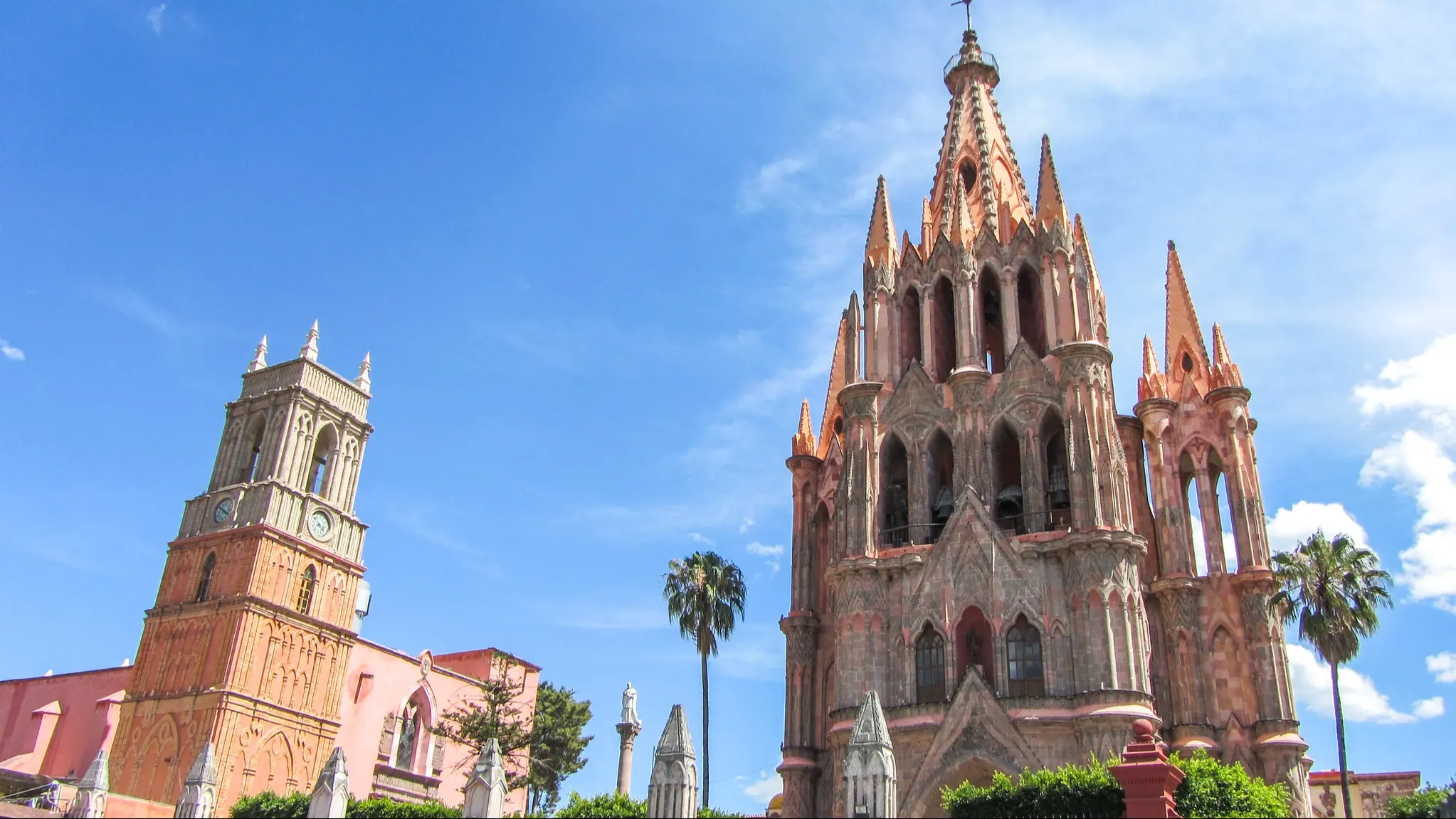
Many people consider San Miguel de Allende the prettiest colonial town in Mexico. About three hours north of Mexico City, in the Colonial Highlands region, San Miguel is a feast for the eyes. Streets of colorfully painted colonial houses… small, intimate plazas…quiet street corners with tinkling fountains…lush tropical flowers tumbling down stone walls…you’ll find it all in San Miguel.
This city of about 175,000 people has been attracting an artsy crowd since the early 1950s. Artists, artisans, writers, and musicians flock here… and you can furnish an entire home with the high-quality, varied, handmade goods you find here, from light fixtures in metal to wood furniture to colorful textiles.
Not surprisingly, San Miguel today has one of the largest snowbird and expat communities in Mexico—as many as 10,000 living here full- or part-time. As a result, you can get by in English in this oh-so-Mexican town.
In San Miguel, you can find a full range of amenities that expats love, from chic restaurants and bars to a plethora of shops and good supermarkets. Its location, in the mountainous high-desert Highlands, gives it a dry climate that is generally temperate. You usually don’t need more than a light jacket in winter, and few bother with air conditioning in summer.
RETA Expert Ronan McMahon’s View on Real Estate in San Miguel
San Miguel is big favorite with expats. The large number of foreigners hasn’t had a negative impact on the character and charm of the town. Quite the opposite. They have contributed to preserving the historic buildings and are central to San Miguel’s artistic traditions.
I understand that over the years more International Living’s editors and correspondents have made San Miguel their base than anywhere else. When seasoned expats who scout the globe for the best places to retire settle on one town, it tells you just how special that place is.
Depending on why you want to buy real estate in San Miguel de Allende, this vibrant and growing community of expats could be your friendly neighbors or rent-paying tenants… But if it’s purely return on investment you’re looking for, there’s an even bigger market force to pay attention to…
San Miguel draws in wealthy folks from across Latin and North America. You’ll find plenty of Europeans and Asians, too, in the sleek boutiques or sipping craft beers and fine wines in trendy bistros.
The international wedding industry in San Miguel de Allende is especially huge, with the number of weddings that took place in San Miguel de Allende increasing from 766 in 2022, to 834 in 2023.
Every weekend San Miguel is usually thronged with high-end weddings. The streets of the center are like a fashion parade, packed with wealthy partiers wearing high-end brands.
My recommendation is to target this high-end market, with plush furnishings and good photos of your property. Nice places in the $200- to $500-a-night range rent quickly in San Miguel.
I figure it’s possible to get $200 a night for at least 60 nights of the year, and easily another $120 for 100 nights of the year. And that leaves plenty of time for you to enjoy the place yourself.
Los Cabos
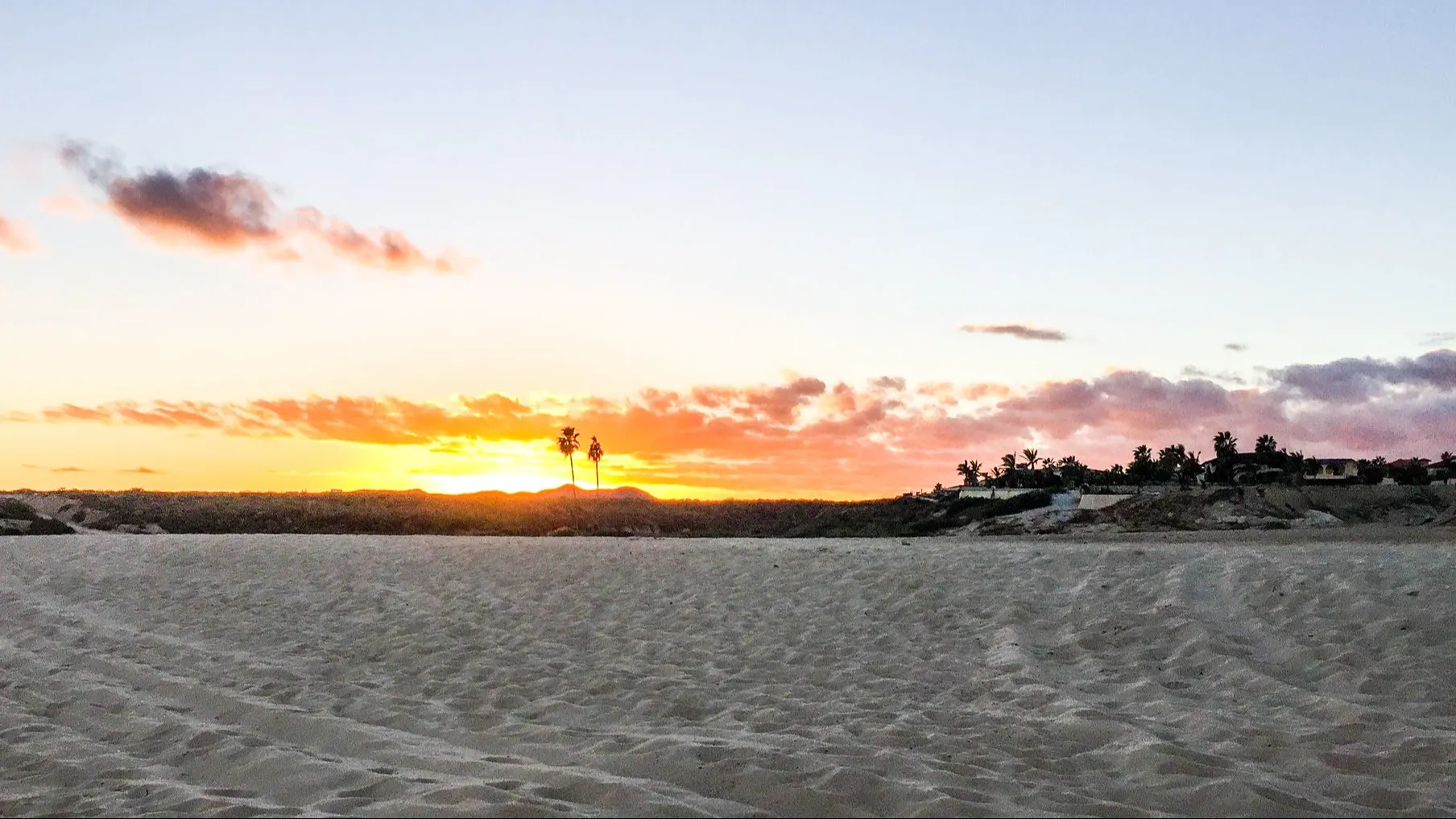
With a stunning desert landscape that meets the Sea of Cortez on one side and the deep Pacific Ocean on the other, Cabo boasts a warm, dry climate with low humidity.
In the 1940s, when Hollywood stars like Clark Gable and Henry Fonda wanted to escape the paparazzi, they went to Los Cabos, on Mexico’s Pacific coast.
At that time, the only way to get to Los Cabos was in a private plane or boat. Those movie stars came to enjoy some fun in the sun…fishing, sunbathing, sipping cocktails by the pool. They were joined by presidents, wealthy businessmen and the international jet set.
They gave Los Cabos a reputation for exclusivity and glamor, a reputation it still holds today.
Fine dining, luxurious spas, yacht trips, world class golf…Cabo has it all. And today it’s attracting more than just the jet set. Lots of ordinary folk are vacationing here, buying second homes, and riding out the cold winters back home in Los Cabos.
RETA Expert Ronan McMahon’s View on Real Estate in Cabo
I own more real estate in Cabo than anywhere else in the world.
I live and breathe the Cabo real estate market like almost no other.
I spend time here every winter. And every day I have more proof that demand has outstripped supply at an incredible rate. There are all sorts of restrictions on building here, yet people just keep coming...the Zoom Boomers with work-from-anywhere jobs, wealthy retirees in search of perfect weather, families, professionals working in the booming service sector...all looking for property to buy or rent.
It’s a trend I identified more than a decade ago, one which paid off handsomely for RETA members who bought into one of our Cabo deals…
To give you an idea of how successful we’ve been to date in Cabo:
Our first-ever Cabo deal was in Copala, in the luxurious Quivira master-planned gated golf community. The developer offered us a deep discount, and the deal was so good that I bought an ocean-view condo myself.. It’s become one of my favorite places to spend time in the world.
The get-in price back in 2015 for these condos, when the transformation I predicted in Cabo was in its early days, was $336,156. Today, you’d pay close to $700,000 or more for something similar in this part of the Quivira resort. That was just the beginning of our run of deals that have allowed RETA members to see six-figure boosts.
February 2024: a villa that a RETA member bought in Copala June 2017 for $385,115, was listed for resale at $988,000. Also in Quivira, a RETA member bought a home in Mavila for $428,222 in June 2018. In November 2023, a three-bed villa was listed at $850,000
There are also condos in Mavila. RETA members paid from $259,800 for a two-bedroom condo in 2018. In January 2023, a broker listed a one-bed (note one bed, not two) condo in Mavila at $359,000. This is almost $100K more than the RETA price (May 2018) on a two-bed!
We had our Cabo Costa deal in August 2021. This is fast approaching first completions and in December 2023, a penthouse condo with the RETA price of $249,000 was listed at $499,000.
Thanks to demand, high quality real estate deals are harder than ever to find in Cabo, but rest assured, RETA are always on the lookout for the next great Cabo opportunity.
Get Your Free Mexico Report Today!
Get Your Free Mexico Report Today!
Explore real estate opportunities in Mexico and other countries with our daily postcard e-letter.
Simply enter your email address below and we’ll send you a free special report – Mexico: The Perfect Close-to-Home Retirement Haven.

By submitting your email address, you will receive a free subscription to IL Postcards, Overseas Dream Home, The Untourist Daily and special offers from International Living and our affiliates. You can unsubscribe at any time, and we encourage you to read more about our Privacy Policy.
Buying Real Estate in Mexico as an Expat
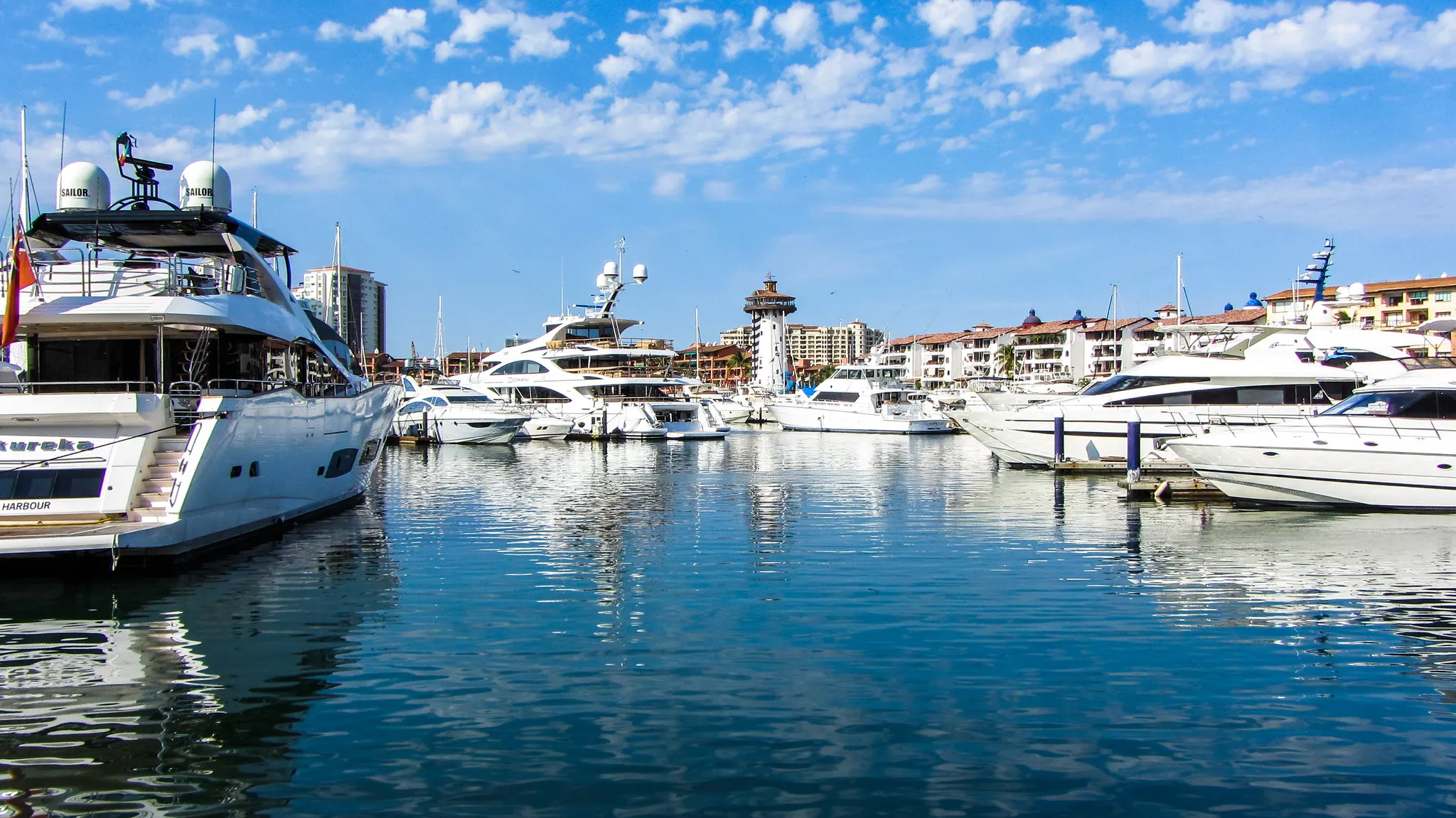
Can North Americans Own Property in Mexico?
Foreigners can own property in Mexico. It’s perfectly legal. Outside the restricted zones—50 kilometers (about 31 miles) from shorelines and 100 kilometers (about 62 miles) from international borders—foreigners can hold direct deed to property with the same rights and responsibilities as Mexican nationals. And inside the restricted zones, foreigners can control land through fideicomisos (bank trust agreements) again with the same rights and responsibilities as Mexican nationals. Alternatively, foreigners can hold land in these areas through a Mexican corporation. However, if it’s a residential property that the foreigner plans to use personally, rather than a commercial property or one used purely as an investment, it should be held in a fideicomiso.
In the restricted zones, if a foreigner buys, the property title is held within a bank trust or a Mexican corporation—not directly. The trust is easily transferrable when an owner is ready to sell. This is a safe, legal, and extremely common vehicle for foreign ownership in Mexico.
Should I Hold The Title in My Own Name?
An article in the Mexican Constitution of 1917 states that no foreigner can own property in Mexico’s “restricted zone.” In 1973, however, the government saw the economic wisdom of allowing foreign investment in the “restricted zones” and established the fideicomiso, or bank trust, as an instrument to allow such investment in residential real estate.
Since 1973, most foreigners who have bought residential property in “restricted zones” have therefore done so through a fideicomiso. This sort of bank trust grants the title for a piece of property to the bank (the trustee), which in turn is obliged to follow any instructions given by the trust’s beneficiary—you, the foreign owner. You retain use and control of the trust and make all investment decisions regarding the property: that is, to sell it, rent it, build on it, live on it, or pass it down to your heirs.
The fideicomiso is very secure—only banking institutions authorized and regulated under Mexican banking laws can serve as fideicomiso trustees. And with the fideicomiso you effectively have all the rights you’d have if you owned the property via direct deed. Fideicomisos do add some time and cost to the buying process. But they are a useful instrument, and many people buying outside the restricted zone— such as expats in the colonial cities, for instance—have chosen to own their property through fideicomisos/bank trusts.
Owning property through a trust deed offers several advantages. First, you can list more than one person as beneficiary. This means, for example, that a husband and wife can essentially be “co-owners.” You can and should structure this in such a way that if one partner dies, the other has immediate, 100% control over the property. Second, you can list an “heir.” This means that, should both co-owners die, a new beneficiary is already in place—a beneficiary who, incidentally, needn’t be related to the original co-owners. Essentially, you write a letter of instruction to the bank naming this heir. When presented with the death certificate(s), the bank immediately and seamlessly passes title to him or her, and they don’t even need to be in Mexico for this. For gay couples, friends who own a property jointly, or for couples in a second marriage with different children, this is a very desirable option.
All this is important because it allows the simple and easy transfer of control over the property and avoids the messiness of sorting out ownership in the Mexican courts. Plus, it allows you to avoid inheritance taxes. Trusts are issued for renewable 50-year periods. If you are buying property currently held in a trust, you can either establish a new trust for the next 50-year period or take over the existing trust deed. Trusts are renewable at any time by simple application. Maintenance fees for this kind of trust are typically $700 to $800 per year. Initial set-up may run a few thousand dollars.
Get Your Free Mexico Report Today!
Get Your Free Mexico Report Today!
Explore real estate opportunities in Mexico and other countries with our daily postcard e-letter.
Simply enter your email address below and we’ll send you a free special report – Mexico: The Perfect Close-to-Home Retirement Haven.

By submitting your email address, you will receive a free subscription to IL Postcards, Overseas Dream Home, The Untourist Daily and special offers from International Living and our affiliates. You can unsubscribe at any time, and we encourage you to read more about our Privacy Policy.
Can the Mexican Government Take my Land?
The Mexican government cannot just take your land.
There have been cases—such as in Baja California some years ago—when the Mexican government ‘repossessed’ property from foreigners. But when you dig a little deeper, it turns out the property titles didn’t hold up to scrutiny—they were essentially fraudulent. Yes, these expats were defrauded, but not by the government; the government was simply correcting the fraud, applying the law, and returning the property to the rightful owners.
Cases like these are good reminders that you need a competent, honest lawyer protecting your interests in a real estate deal…someone who can make sure a property title is legal, clear, and unencumbered. But IF there is a problem, you are protected as fully under the law as a Mexican citizen would be. Mexico’s legal system does work, despite bureaucracy and the occasional corruption.
Are There Any Restrictions for Expats Buying Real Estate in Mexico?
As a foreign buyer, you cannot hold property that lies within 50 kilometers (31 miles) of the high tide line, or within 100 kilometers (62 miles) of Mexico’s international borders, directly in your own name. It needs to be held via a Mexican corporation or fideicomiso (bank trust).
And, you cannot own ejido land. This type of land was established in 1917 as a result of the Mexican revolution. It is not private property; it is government land granted for use by members of local ejidals, something like Native American land in the U.S. and Canada. This land can be converted into private property, but the process is long and complicated. One of the most important aspects of title research is checking if the plot you’re interested in has never been ejidal land and, if it was, that it was successfully privatized a long time ago and never challenged. Many things can go wrong with an ejidal property. You need to make sure that all the boxes were ticked when the ejido was privatized, and may need a specialist attorney to verify that.
Closing Costs in Mexico
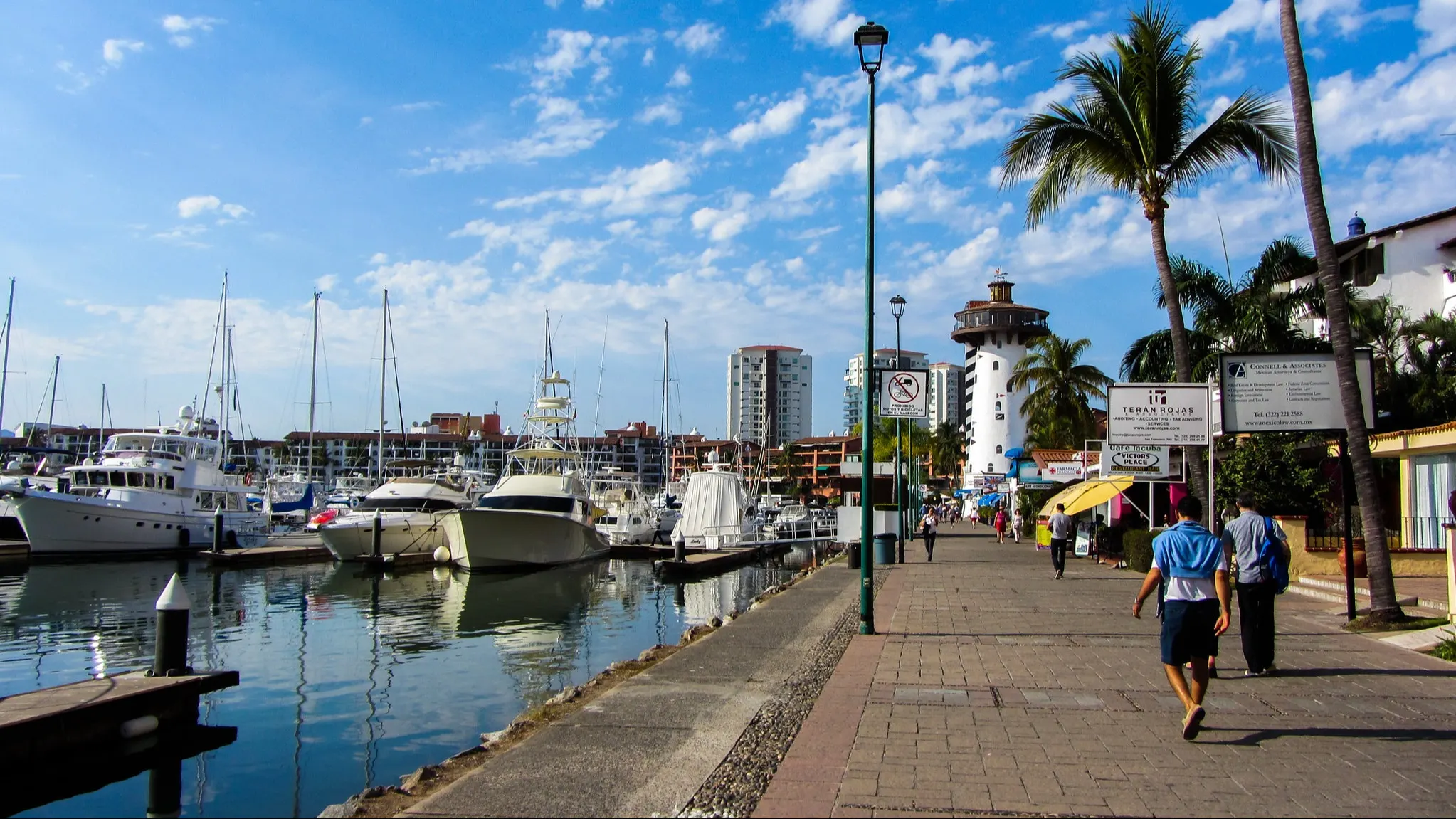
Once a buyer's offer on a property in Mexico is accepted, their attorney will provide an estimate of the closing costs, which are entirely the responsibility of the buyer. The estimate may vary due to fluctuations in the exchange rate between the US Dollar and the Mexican Peso, as property values are often listed in US Dollars but officially registered in Mexican Pesos.
Buyers are typically required to pay about half of the estimated closing costs in advance to cover the notary's out-of-pocket expenses.
Closing costs in Mexico generally range from 5% to 9% of the purchase price, with higher costs if a mortgage is involved. These costs include various fees and expenses, such as:
Transfer tax: A tax that varies depending on the location, it is 3% to 3.3% in the Riviera Maya
Trustee Bank Fee: Around $2,200 which includes the permit that is issued by the ministry of foreign affairs, one annual bank fee payment, and a bank acceptance fee
Appraisal for Future Tax Assessment: Varies based on property size, conducted by a locally certified appraiser
Non-Encumbrance Certificate: Approximately $50
Preventative Notice Advice: About $130
Public Registry Fees: Approximately $350
Notary's Fee: Varies from 0.5% to 1% of the transaction size
It is important to note that while the seller is responsible for real estate fees and applicable capital gains taxes, the buyer must cover all closing costs associated with the purchase of the property in Mexico.
Get Your Free Mexico Report Today!
Get Your Free Mexico Report Today!
Explore real estate opportunities in Mexico and other countries with our daily postcard e-letter.
Simply enter your email address below and we’ll send you a free special report – Mexico: The Perfect Close-to-Home Retirement Haven.

By submitting your email address, you will receive a free subscription to IL Postcards, Overseas Dream Home, The Untourist Daily and special offers from International Living and our affiliates. You can unsubscribe at any time, and we encourage you to read more about our Privacy Policy.
